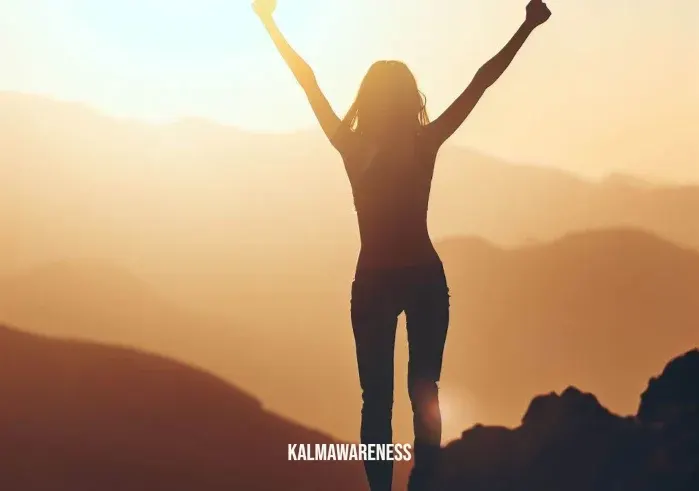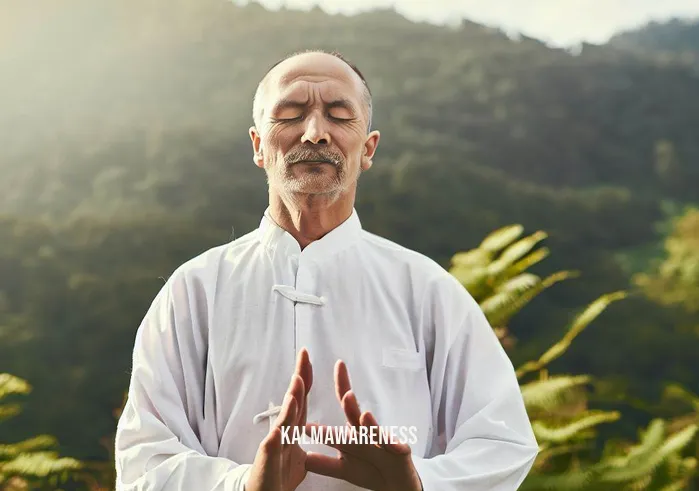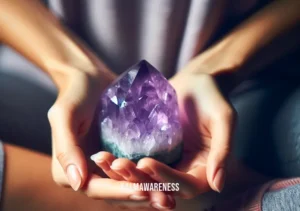Bipolar Disorder and Meditation: A Path Towards Stability and Calm
Bipolar disorder, marked by emotional turbulence and intense mood swings, can pose significant challenges for individuals living with the condition. But meditation can play a vital role in their journey towards emotional regulation and self-care. This article will delve into the intersection of bipolar disorder and meditation, demonstrating how mindfulness techniques can help cultivate calmness and stability.
Understanding Bipolar Disorder
Bipolar disorder, as defined by the sense of stability article, is a mental health condition characterized by periods of severe mood episodes ranging from mania (or hypomania) to depression. Individuals with bipolar disorder can also experience emotionally turbulent periods, which can be distressing and difficult to navigate.
Though the social rhythm therapy manual highlights that treatments often focus on medication and psychotherapy, there’s growing recognition for the potential role of holistic practices like meditation in managing bipolar symptoms.
The Role of Meditation
Meditation, as described in the article about the best meditation bench, is a practice that promotes relaxation, focus, and a heightened awareness of the present moment. This mindful awareness can be particularly beneficial for individuals living with bipolar disorder.
To understand the benefits, one can refer to the article men want peace, which highlights how meditation can create a deep sense of inner peace. Similarly, the article on mindful behavioral solutions emphasizes the connection between mindfulness and improved mental health outcomes.
Different Meditation Techniques
Various meditation techniques can be helpful for bipolar disorder. One such technique is anchoring meditation, where the person focuses their attention on a specific object, phrase, or bodily sensation. This technique can help in grounding individuals, enabling them to stay present and cope with emotional turbulence.
Another technique is the balance meditation script. As its name suggests, it aims to bring balance and harmony to the mind, crucial for individuals with bipolar disorder.
Meditation can be performed while sitting, with proper posture guidance from the sitting down base article, or even lying down with the help of the body compassion definition post.
Embracing Emotional Regulation through Meditation
The journey towards cultivating emotional balance through meditation might be challenging, but it’s certainly attainable. In the process, individuals might encounter a series of emotional peaks and troughs, commonly referred to as emotional turbulence. The emotionally turbulent article elucidates more about this phenomenon.
One essential tool for emotional regulation is the name it to tame it worksheet, an exercise rooted in the principle of identifying and acknowledging emotions to better control them.
This is just the beginning of our exploration into the intersection of bipolar disorder and meditation. Continue to the next part of this article, where we’ll delve deeper into the role of meditation for sleep and relaxation, and how these can play a significant part in mood stability and self-care.

Exploring Meditation Techniques for Bipolar Disorder
As we continue our journey into the intersection of bipolar disorder and meditation, we now turn our focus to specific meditation techniques that can aid individuals with bipolar disorder. Understanding these methods and their benefits can provide an effective roadmap towards mood stability and emotional regulation.
Techniques for Focus and Calm
Alfie’s Deep Relaxation
This technique, as explained in Alfie’s deep relaxation, is designed to induce a deep state of relaxation by focusing on the breath and visual imagery. It’s particularly helpful for those with bipolar disorder as it aids in soothing the mind and regulating intense emotions.
Left Nostril Breathing Before Sleep
As mentioned in the article about left nostril breathing before sleep, this method can enhance calmness and facilitate better sleep. With better sleep quality, the mood stability of people living with bipolar disorder can be significantly improved.
Guided Meditation for Deep Sleep and Relaxation
This type of meditation, as explored in the guided meditation for deep sleep and relaxation article, involves a guide (either a real person or a recording) leading you through a relaxation process. This can help individuals with bipolar disorder release tension and achieve a peaceful state of mind.
Mindful Movement to Fall Asleep Fast
Mindful movement, as outlined in the mindful movement fall asleep fast article, encourages gentle, conscious movement and mindful awareness of the body. This can help individuals with bipolar disorder focus their mind, reduce restlessness, and improve sleep.
Savoring Sleep Technique
Explored in the savoring sleep article, this technique emphasizes the importance of enjoying and cherishing the process of falling asleep. It teaches how to appreciate the comfort and tranquillity that sleep brings, which can aid in the management of bipolar symptoms.
Meditation Techniques: A Comparative Overview
In the following table, we compare the different meditation techniques for individuals with bipolar disorder. This comparison will allow you to understand each method’s focus, benefit, and the link to explore more:
| Technique | Focus | Benefits | More Info |
|---|---|---|---|
| Alfie’s Deep Relaxation | Breath & Visual Imagery | Deep Relaxation | Link |
| Left Nostril Breathing Before Sleep | Single Nostril Breathing | Enhances Calmness, Improves Sleep | Link |
| Guided Meditation for Deep Sleep and Relaxation | Guided Relaxation | Releases Tension, Achieves Peacefulness | Link |
| Mindful Movement to Fall Asleep Fast | Conscious Movement & Body Awareness | Reduces Restlessness, Enhances Focus | Link |
| Savoring Sleep Technique | Enjoying the Process of Falling Asleep | Better Sleep, Management of Bipolar Symptoms | Link |
Through the exploration of these diverse meditation techniques, it becomes clear that meditation can be an effective tool in the journey towards improved mood stability and emotional regulation for individuals with bipolar disorder.
In the next part of this article, we will look at how affirmations can reinforce the positive effects of meditation for bipolar disorder. We’ll explore the concept of self-care and how individuals with bipolar disorder can harness these practices to navigate their emotional landscapes effectively. Stay tuned for a deeper understanding of the transformative power of meditation and mindfulness.
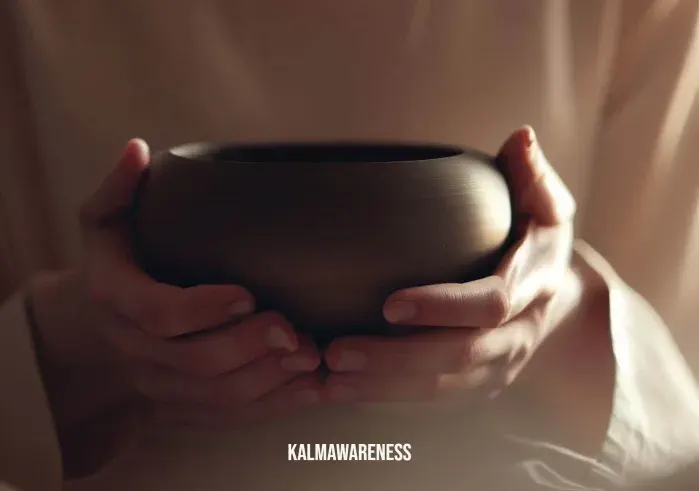
Affirmations and Self-Care in Bipolar and Meditation Practices
Taking the insights from meditation techniques, we now turn our gaze towards the power of affirmations and self-care in managing bipolar disorder. These are not only an integral part of a well-rounded mindfulness practice but also significant contributors to emotional regulation and mood stability.
The Power of Affirmations
Affirmations are positive statements that individuals repeat to themselves, fostering a more positive mindset and influencing behavior change. Particularly for those grappling with bipolar disorder, affirmations can act as anchors in tumultuous emotional seas.
Take, for instance, the practice of affirmations for health anxiety. By repeating affirmations like “I am healthy, strong, and capable,” individuals can mitigate health-related anxiety—a common symptom in those with bipolar disorder. Similarly, affirmations for surgery anxiety can alleviate fears surrounding medical procedures, promoting a sense of calm and control.
Moreover, as explored in the article on affirmations for burnout, affirmations can also combat the feelings of exhaustion and overwhelm that often come with managing a chronic condition like bipolar disorder. Statements like “I am enough,” or “My efforts are valuable and recognized,” can replenish emotional reserves and restore a sense of self-worth.
As Ralph Waldo Emerson once said, “Man is what he thinks all day long.” By consciously guiding our thoughts through affirmations, we can indeed influence our emotional states, a fact that is particularly pertinent for those managing bipolar disorder.
The Role of Self-Care
Just as important as affirmations is the practice of self-care. This is not just about physical wellbeing, but emotional, mental, and spiritual health as well. For individuals with bipolar disorder, self-care practices are fundamental to maintaining balance and stability.
Consider the practice of caring for classrooms. While this primarily applies to educators, it is relevant for anyone—taking time to create a safe, nurturing environment for oneself can significantly impact one’s mental wellbeing.
Similarly, the article on mindful students highlights the importance of mindfulness in self-care. By becoming mindful students of our own experiences, we can better navigate the ups and downs of bipolar disorder, approaching each moment with curiosity and kindness.
In essence, self-care is about creating a compassionate relationship with oneself. As the saying goes, “You yourself, as much as anybody in the entire universe, deserve your love and affection.”
Bringing It All Together: Bipolar and Meditation
The integration of affirmations and self-care with meditation can revolutionize the way individuals manage bipolar disorder. By harnessing the calming power of meditation, the positivity of affirmations, and the nurturing approach of self-care, individuals can navigate their bipolar journey with greater ease and resilience.
In the next chapter, we’ll delve into the concept of emotional balance—how it can be disrupted in bipolar disorder, and how meditation practices can help restore it. We will explore strategies to manage emotional turbulence, and ways to ground oneself amidst the changing tides of bipolar disorder. Stay tuned for more insights into the powerful synergy of bipolar and meditation.
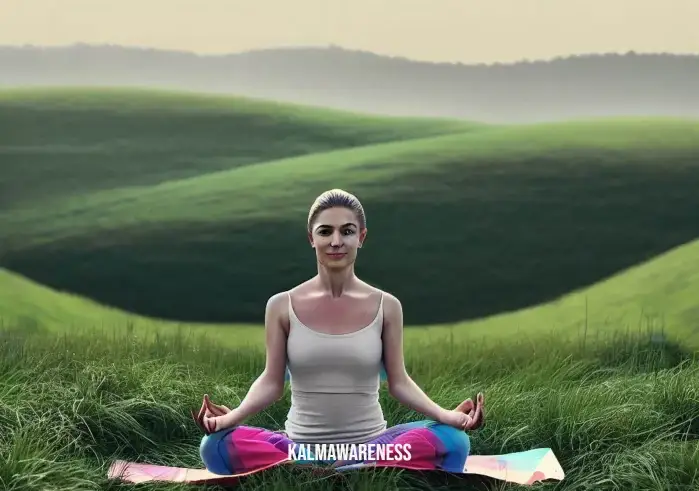
Achieving Emotional Balance through Bipolar and Meditation Practices
In the intricate journey of managing bipolar disorder, achieving emotional balance can often seem like climbing an insurmountable peak. However, with the appropriate tools, such as the practice of meditation and mindfulness, this task can become more achievable.
Emotional Turbulence and Bipolar Disorder
People with bipolar disorder often experience a state of emotional turbulence, wherein their emotions fluctuate drastically. These rapid shifts can lead to feelings of instability and a loss of control. In Emotionally Turbulent, we explore how these turbulent shifts can affect daily life and mental wellbeing.
As the famous author, Arthur Golden, once said, “Adversity is like a strong wind. It tears away from us all but the things that cannot be torn so that we see ourselves as we really are.” Bipolar disorder, indeed, presents its challenges. Yet, through these challenges, we can also discover our strengths, our resilience, and our capacity to find stability amidst the storm.
Meditation as an Anchor
Meditation can be a powerful tool to counteract emotional turbulence. By practicing mindfulness, individuals can gain a sense of stability and peace. An excellent example of this can be found in the practice of the Eye of the Hurricane meditation. This meditation practice aims to cultivate a space of calm amidst the chaos, much like the eye of a hurricane, providing a reprieve from the emotional whirlwind of bipolar disorder.
| Meditation Technique | Description | Benefits |
|---|---|---|
| Eye of the Hurricane | Fosters a sense of calm amidst emotional chaos | Provides emotional stability, Promotes relaxation |
| Anchoring meditation | Focuses attention on a particular object, thought, or sensation | Increases focus, Reduces emotional reactivity |
| Sit Up Foot Anchor | Grounds individuals by bringing attention to the feet | Enhances body awareness, Provides a sense of grounding |
| Anchor Breath | Directs focus on the breath | Encourages deep breathing, Soothes the nervous system |
| Sitting Down Base | Encourages focus on the base of the body | Strengthens presence, Fosters stability |
Incorporating such meditation practices into daily routines can offer individuals with bipolar disorder a sense of control and stability. As the Dalai Lama said, “Do not let the behavior of others destroy your inner peace.”
Conclusion
While the journey of bipolar and meditation is a personal one, it is also one filled with hope. The power to achieve emotional balance lies within us. We need only to harness it. Through consistent practice, compassion, and understanding, stability amidst emotional turbulence becomes more achievable.
In our next chapter, we’ll explore the role of a support system in managing bipolar disorder. We’ll also discuss how mindfulness practices can influence our interactions with others and enhance our ability to seek and offer support. Remember, as Christopher Reeve beautifully expressed, “Once you choose hope, anything’s possible.”
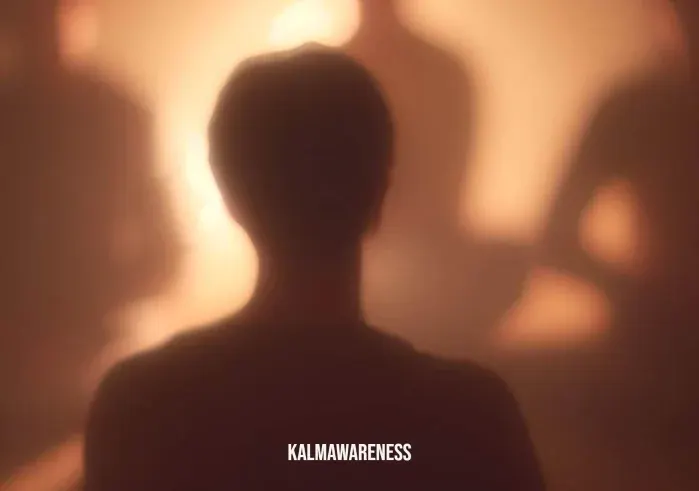
The Role of Support and Social Interactions in Bipolar Disorder and Meditation
Living with bipolar disorder can often feel like sailing in stormy seas, but it’s important to remember that we’re not alone on this journey. Connecting with a supportive community and integrating mindfulness techniques can significantly impact our navigation through these turbulent waters.
The Power of Support
Managing bipolar disorder effectively involves a strong support network. As the saying goes, “It takes a village to raise a child,” and in the context of mental health, it takes a compassionate, understanding community to support an individual. The Mindful Student blog emphasizes the significance of a supportive environment for individuals dealing with mental health challenges.
Thich Nhat Hanh, the renowned mindfulness advocate, stated, “The greatest gift we can offer anyone is our true presence and awareness.” By extending our mindfulness practices to our interactions, we can cultivate more meaningful connections and lend support to those in need.
Bipolar Disorder and Social Rhythm Therapy
One significant therapeutic approach to managing bipolar disorder is the Social Rhythm Therapy. It aims to stabilize the body’s biological rhythms and subsequently the mood by establishing regular daily routines. Check the Social Rhythm Therapy manual for a comprehensive understanding of this therapy.
Navigating Social Interactions with Mindfulness
Applying mindfulness techniques can also help individuals with bipolar disorder navigate social interactions more effectively. Mindful practices like self-discipline and emotional control can allow individuals to respond rather than react in social situations, fostering healthier and more fulfilling relationships.
“Between stimulus and response, there is a space. In that space is our power to choose our response. In our response lies our growth and our freedom.” – Viktor Frankl
Let’s look at some mindfulness techniques that can enhance our social interactions:
- Name it to tame it: This practice involves identifying and acknowledging our feelings, which allows us to manage them better.
- Control Self-Reflection: Self-reflection helps us understand our emotional triggers and patterns, thus enabling us to manage our responses better.
- Cognitive Bypassing: By learning to acknowledge and process our emotions instead of bypassing them, we can express ourselves more authentically in social situations.
By integrating mindfulness into our social interactions, we can navigate the social sphere more effectively and enrich our support system.
Conclusion
In our journey of managing bipolar disorder through meditation, the power of a strong, supportive community, coupled with effective mindfulness practices, cannot be overstated.
In the next chapter, we’ll delve deeper into the role of self-care in managing bipolar disorder and how we can incorporate meditation into our self-care routine. Remember, as Audrey Hepburn once said, “As you grow older, you will discover that you have two hands, one for helping yourself, the other for helping others.” Let’s extend one hand to our community and the other to ourselves as we continue our journey.
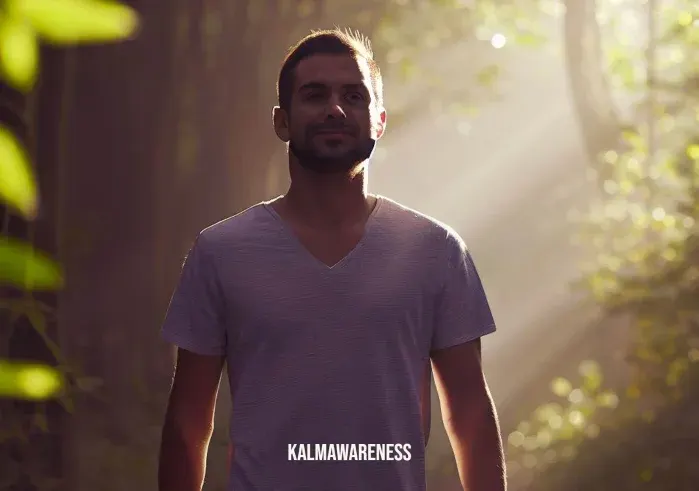
The Gift of Self-Care: Bipolar and Meditation
In this final chapter of our journey exploring bipolar disorder and meditation, we turn inward to the sanctuary of self-care. If there’s one thing to remember, it’s that treating ourselves with the same kindness we extend to others isn’t a luxury—it’s a necessity.
The Essence of Self-Care
Self-care is not just about bubble baths and indulgent treats (although those can be part of it). It’s about recognizing our needs and taking the time to meet them. As we delve into self-care, remember this quote by L.R. Knost, “Taking care of yourself doesn’t mean ‘me first,’ it means ‘me too.'”
When we suffer from conditions like bipolar disorder, the importance of self-care becomes paramount. Building a self-care routine that includes mindfulness and meditation can help us better manage our symptoms, reduce stress, and improve our overall quality of life.
One way of embracing self-care is to explore Mindful Behavioral Solutions, a practical guide that emphasizes the importance of taking care of our mental health.
The Art of Mindful Self-Care
Incorporating mindfulness into our self-care routine can help us become more attuned to our needs. One way to do this is through Calm Child activities, which offer mindfulness exercises that are as beneficial for adults as they are for children.
Remember, self-care isn’t a one-size-fits-all concept. What works for one person might not work for another. Listen to your needs and be patient with yourself.
Self-Care for Bipolar Disorder: Some Suggestions
Here are some self-care practices for managing bipolar disorder. Each of these practices can be customized to fit your preferences and lifestyle.
- Meditation: Techniques like Sit Up Foot Anchor can help ground you during periods of emotional turbulence.
- Mindful Movement: Practices like yoga and tai chi, as mentioned in our Mindful Movement blog, can offer physical activity while promoting mindfulness.
- Adequate Sleep: Maintaining a regular sleep schedule is crucial for managing bipolar disorder. Techniques like Left Nostril Breathing Before Sleep can promote better sleep quality.
- Healthy Diet: Nourishing your body with healthy foods can have a significant impact on your mood and energy levels.
- Time in Nature: Spending time in nature can have a soothing effect on the mind and body. Try mindfulness walks or nature meditation.
Wrapping Up Our Journey
In conclusion, managing bipolar disorder is a journey that requires compassion, patience, and proactive self-care. Incorporating mindfulness and meditation into our daily routine can help create stability, peace, and enhanced emotional regulation.
Remember, you are not alone on this journey. As the Buddha once said, “No one saves us but ourselves. No one can and no one may. We ourselves must walk the path.”
We hope this series has illuminated the path for you a little more, and we invite you to explore more of our articles on KalmAwareness for further insights and resources on mindfulness, meditation, and emotional wellbeing. Until then, remember to take care of yourself and keep exploring the transformative power of mindfulness.
